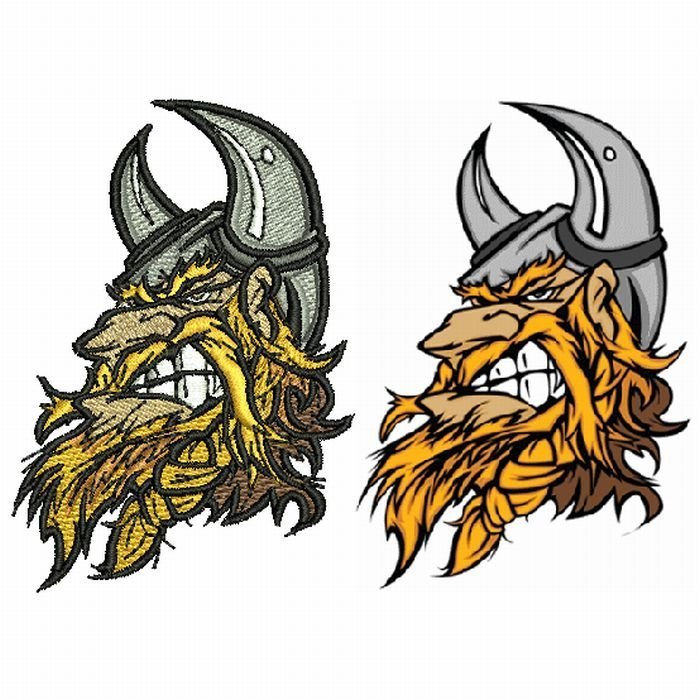Top Notch Digitizing for Embroidery: Expert Craftsmanship
Wiki Article
Mastering the Embroidery Digitizing Process: Your Ultimate Guide
Embroidery digitizing is a thorough craft that calls for precision and know-how to convert complex layouts into electronic styles for maker embroidery. As craftsmens embark on this trip to understand the needlework digitizing process, a detailed understanding of the basics establishes the foundation for quality. Past the basic knowledge exists a world of innovative software program, specialized tools, and nuanced methods waiting to be discovered. By diving right into the subtleties of digitizing, one can unlock a world of creative opportunities and raise their needlework jobs to new elevations.
Comprehending Embroidery Digitizing Essentials
Embroidery digitizing fundamentals form the foundation whereupon elaborate designs are translated right into machine-readable layouts for precise sewing. This first action in the embroidery digitizing process is important for ensuring that the last stitched item is a loyal depiction of the original layout. Recognizing embroidery digitizing essentials entails comprehending key principles such as stitch kinds, sew instructions, thickness, rug, and draw payment.Sew kinds play an important function in identifying the aesthetic and textural result of the embroidered style. By picking the ideal stitch type, whether it be satin, fill, or running stitch, digitizers can achieve the preferred result and boost the overall quality of the embroidery. In addition, stitch direction influences the flow and measurement of the layout, while thickness figures out the spacing and coverage of the stitches.
Furthermore, underlay stitching offers stability to the style by safeguarding the textile and protecting against distortion during the needlework process. Pull payment is an additional important consideration to neutralize the natural propensity of material to agreement when sewn. Understanding these embroidery digitizing essentials is fundamental for creating professional-quality stitched items.
Picking the Right Digitizing Software Application
Selecting the suitable digitizing software application is a critical decision that considerably affects the performance and high quality of the embroidery digitizing process. Digitizing for Embroidery. When selecting the appropriate digitizing software program, it is necessary to take into consideration elements such as the complexity of layouts you prepare to create, the user-friendliness of the software application, the level of customer assistance used, and the compatibility with your embroidery deviceThere are numerous digitizing software application options readily available in the marketplace, varying from standard programs for newbies to sophisticated software for specialist digitizers. Some preferred options include Wilcom EmbroideryStudio, Hatch Needlework Software Program, and PulseID. These software application plans use the original source a large range of tools and functions to assist you develop complex styles easily.
Before making a decision, it is advisable to explore the various software options check this via totally free trials or trials to figure out which one best fits your demands. Additionally, reading reviews and seeking referrals from experienced digitizers can supply valuable understandings right into the staminas and weaknesses of each software (Digitizing for Embroidery). By very carefully examining your demands and contrasting the features of various digitizing software application, you can make an educated selection that improves your needlework digitizing process
Digitizing Tools and Methods

Optimizing Layout Settings for Embroidery
Mastering the ins and outs of style setups is basic in attaining optimal outcomes in the needlework digitizing procedure, structure upon the structure laid by recognizing digitizing tools and strategies. When enhancing design settings for embroidery, it is important to think about elements such as stitch kind, density, padding, draw compensation, and enrollment. Enrollment settings straighten different aspects of the layout accurately, keeping total design honesty.
Troubleshooting Common Digitizing Issues
When running into common digitizing concerns throughout the embroidery process, it is vital to comprehend the source and execute effective services without delay. One usual issue is stitch density issues, where stitches may be also visit the website dense, triggering the material to pucker, or too sparse, resulting in voids in the layout. Readjusting the stitch thickness setups in the digitizing software application can aid settle this issue.Another regular obstacle is string breaks during the needlework process. This can occur due to different factors such as inaccurate tension setups, dull needles, or making use of low-grade thread. Guaranteeing appropriate upkeep of the embroidery maker, including routine needle modifications and tension adjustments, can reduce the occurrence of string breaks.
Furthermore, style registration mistakes can result in misaligned components within the embroidery style. Checking the style positioning in the digitizing software application and making required adjustments before stitching can aid in avoiding this problem. By resolving these usual digitizing problems immediately and effectively, you can make certain a smoother needlework procedure and top notch completed products.
Conclusion
Finally, grasping the embroidery digitizing procedure calls for a solid understanding of the essentials, the appropriate option of software program, and expertise of devices and techniques. Optimizing layout setups and fixing usual digitizing concerns are essential steps in making sure premium embroidery outcomes. By complying with these steps diligently, one can accomplish precision and performance in the digitizing process.Report this wiki page